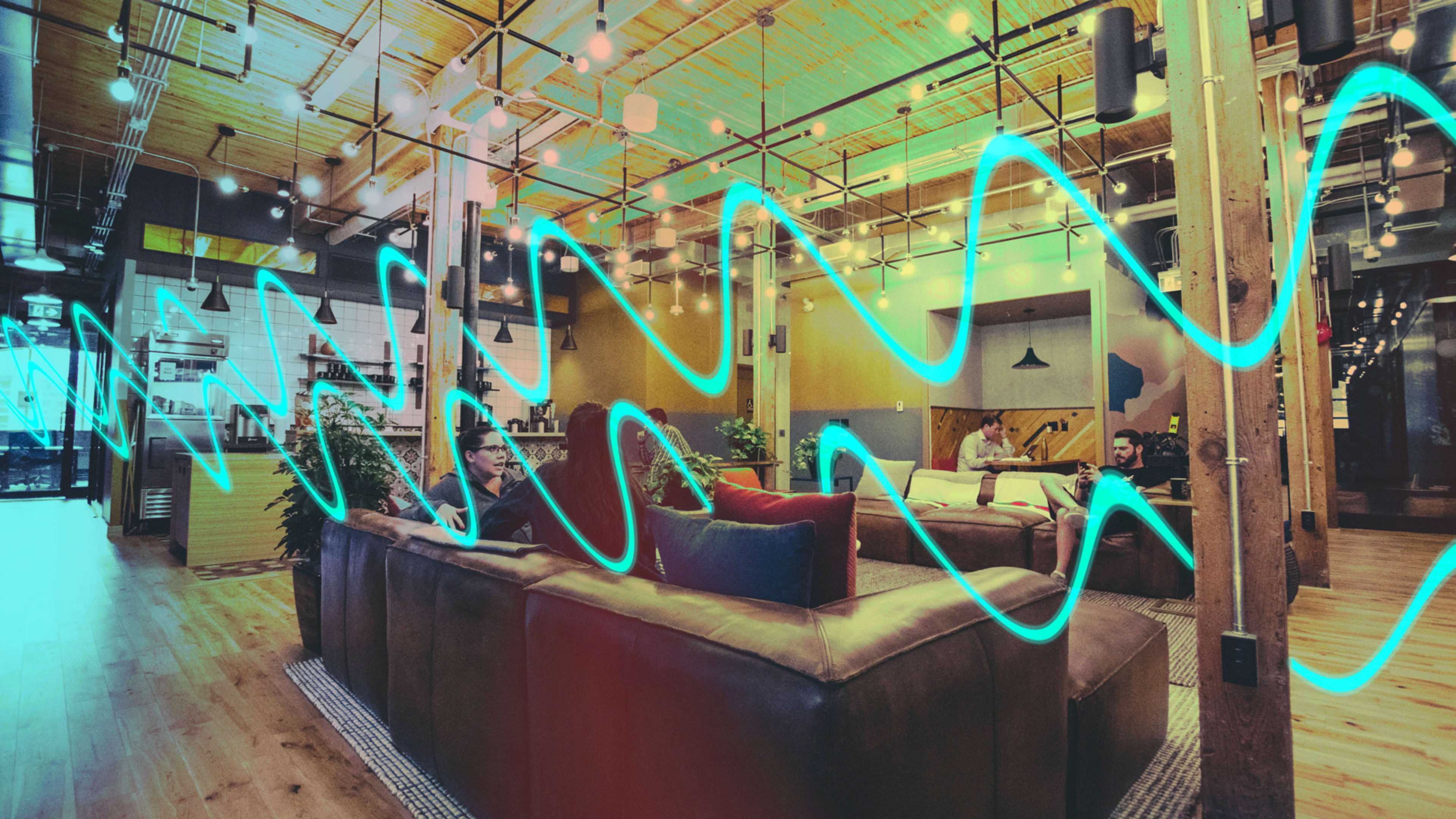When people describe the speed of 5G wireless as incredible, unbelievable, or even jaw-dropping, what they’re talking about is the millimeter-wave version of the technology, also known as ultra wideband. What often goes unmentioned: mmWave 5G, though indeed remarkably fast, has less range than the slower sub-6 flavor of 5G and isn’t great at going through walls. That’s why it’s much less widely available than sub-6 and is most impressive if you’re out and about rather than hunkered down inside your workplace.
It is, however, possible to bring mmWave’s benefits indoors if you put a small cell site right inside a building. In September, Verizon announced that it was working with Corning to provide the necessary technology. And now the two companies are planning to put some of those cell sites inside WeWork locations.
To be exact, 10 WeWorks—including ones in Atlanta, Boston, Los Angeles, Miami, New York, and Seattle—will be installing the necessary equipment to deploy Verizon mmWave 5G within their coworking spaces. The company says that it intends to eventually do the same at all of its U.S. locations.
The move fits into WeWork’s efforts to reboot itself in the era following its long period of corporate intrigue followed by multiple downsizings and new challenges spawned by the COVID-19 pandemic. “Today our focus is on, how do we enhance the experience?” explains WeWork chief product and experience officer Hamid Hashemi. “How do we provide services that you’re not going to find elsewhere?”
Of course, Verizon would be just as happy if its customers eventually do find indoor 5G everywhere. And it’s eager to learn from the WeWork project. “We took 10 of the busiest locations and said, ‘Why don’t we work with you to design indoor 5G coverage and just blanket those places?'” says Sampath Sowmyanarayan, Verizon’s president of global enterprise. “So it becomes a model workplace of the future that’s flexible, secure, fast, and reliable, and that becomes almost our template for rolling out workspaces in the future.”
At first blush, office space might seem like one place where cellular connectivity doesn’t matter that much—assuming that you work somewhere with decent Wi-Fi. But mmWave 5G could be much speedier than the connectivity you get at work. Moreover, you might well prefer to connect directly to your own corporate wireless account than to get on shared Wi-Fi, which introduces security concerns such as the possibility of a man-in-the-middle attack. Along with all of 5G’s speed, “it just really makes it so much easier for people to jump on a secure network,” Hashemi says.
Sampath Sowmyanarayan, VerizonNobody knew Netflix and Google were going to be the killer apps.”
Because the wireless carriers’ hoopla for 5G has been so expansive—well before most people can get it in its most game-changing form—the technology can feel like a solution in search of a problem. Sowmyanarayan acknowledges that some of the applications that could make 5G feel essential even to skeptics are yet to be invented. He says that the next 15 months will be critical, and that collaborations such as Verizon’s with WeWork will play a role in identifying the specific places where 5G could be most useful.
If those details remain a work in progress, he adds, that’s no different from previous sea changes when the availability of new technology spurred people to unlock its potential. In the early days of the consumer internet, “nobody knew Netflix and Google were going to be the killer apps,” he notes. “It’s the same thing for 5G. We want to just build the ecosystem and let people develop applications that leverage its capabilities.”
With that in mind, it might be okay if WeWork’s indoor mmWave deployment is arriving before typical clients may see it as anything like a necessity. “I can’t say that our customers have been asking for it,” Hashemi says. “But it’s our job to be ahead of our customers.”
Recognize your brand’s excellence by applying to this year’s Brands That Matter Awards before the early-rate deadline, May 3.
